Bali is one of those places that instantly grabs your senses the smell of incense in the morning air, the hum of scooters weaving through narrow streets, the distant crash of waves somewhere always nearby. It’s not just a destination, it’s an energy. The island moves at its own rhythm, blending centuries-old tradition with a kind of spiritual calm that seems to seep into everything and everyone.
About North Bali
North Bali feels like stepping into a quieter, more soulful version of the island the kind that moves at a slower pace and wraps you in raw nature, spiritual energy, and authenticity. It’s worlds away from the hustle of Seminyak or the party buzz of Canggu. Up here, it’s all about waterfalls, jungle-covered hills, black sand beaches, and sleepy coastal towns where life is beautifully simple.
Lovina is the most well-known spot in the north. It’s mellow, with calm waters and a laid-back vibe. People come here for early-morning dolphin watching, not beach clubs. There’s something timeless about watching the sun rise over the Bali Sea while a local fisherman rows past in his colorful boat. The beach isn’t white sand — it’s volcanic and dark, but soft underfoot and perfect for long walks with barely another soul around.
🥥Recommended Attraction In North Bali
📿 Chase Waterfalls in Sekumpul
📝 Describing the Experience
The sound hit me first, a deep, thunderous rumble that echoed through the jungle. As I trekked down the slippery steps, surrounded by thick foliage and the scent of wet earth, the mist began to rise around me. Then I saw Sekumpul Waterfall, a cluster of majestic falls cascading down moss-covered cliffs into a jade-green pool. The spray cooled my skin, and I just stood there, completely dwarfed by nature’s raw power. I couldn’t resist wading in the water. It was shockingly cold, but invigorating. It was one of those moments where the world feels incredibly still and alive at the same time.
📖 About Sekumpul Waterfall
Often dubbed the most beautiful waterfall in Bali, Sekumpul is a powerful, multi-tiered natural wonder nestled deep in North Bali’s lush highlands.
📅 Best time to visit: April to October (dry season)
📍 How to get there: Drive or hire a driver to Sekumpul Village; moderate trek required
💰 Cost: IDR 20,000 entry + guide fees if you opt in
💡 Pro Tips
- Wear water shoes with grip, the trail gets slippery.
- Go early to avoid crowds and catch the best lighting.
- Bring a waterproof bag for your camera or phone.
👨👩👧👦 Is It Family-Friendly?
Not ideal for young children or elderly travelers due to steep and uneven paths.
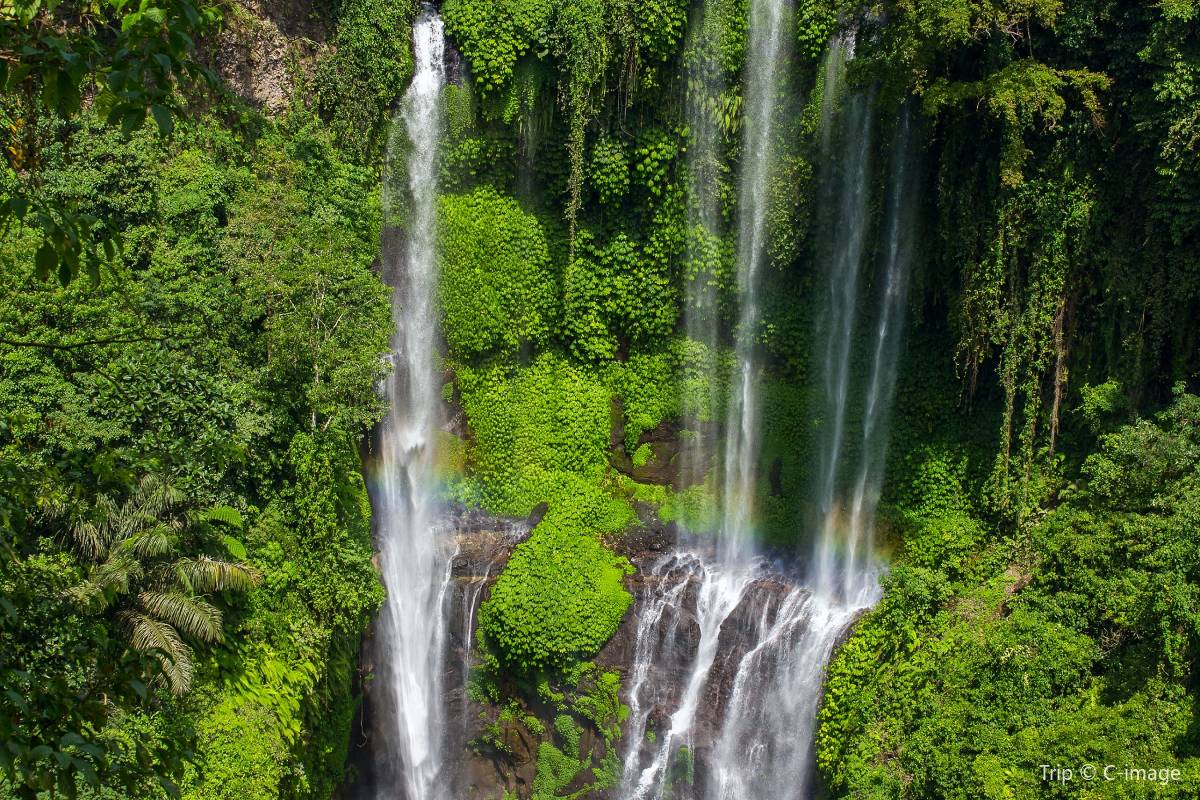
🧘♀️ Breathe Deep in the Hills of Munduk
📝 Describing the Experience
I woke to the sound of roosters echoing through the misty hills and the faint scent of clove smoke drifting through the air. Wrapped in a blanket, I stepped onto the balcony of my little homestay and looked out over layer after layer of green coffee plantations, rice fields, and forested valleys. Later that morning, I wandered through village trails, meeting locals who offered freshly brewed Bali coffee and kind smiles. The air here feels cleaner, the pace slower. By the time I reached a hidden waterfall, I felt like I’d stepped into another world untouched, tranquil, and deeply rooted in nature.
📖 About Munduk
A peaceful highland village in North Bali, Munduk is known for its cool climate, coffee farms, and stunning trekking routes through forests and waterfalls.
📅 Best time to visit: May to September
📍 How to get there: About 2.5–3 hours’ drive from Ubud or Canggu
💰 Cost: Free to explore; some waterfalls may have small entrance fees
💡 Pro Tips
- Stay at a local guesthouse for the full immersive experience.
- Bring a light jacket. It gets chilly in the evenings.
- Hire a guide if you want to explore off-the-beaten-path waterfalls.
👨👩👧👦 Is It Family-Friendly?
Yes, for families with older kids. Gentle walks and farm visits are great for all ages, but waterfall treks can be steep.
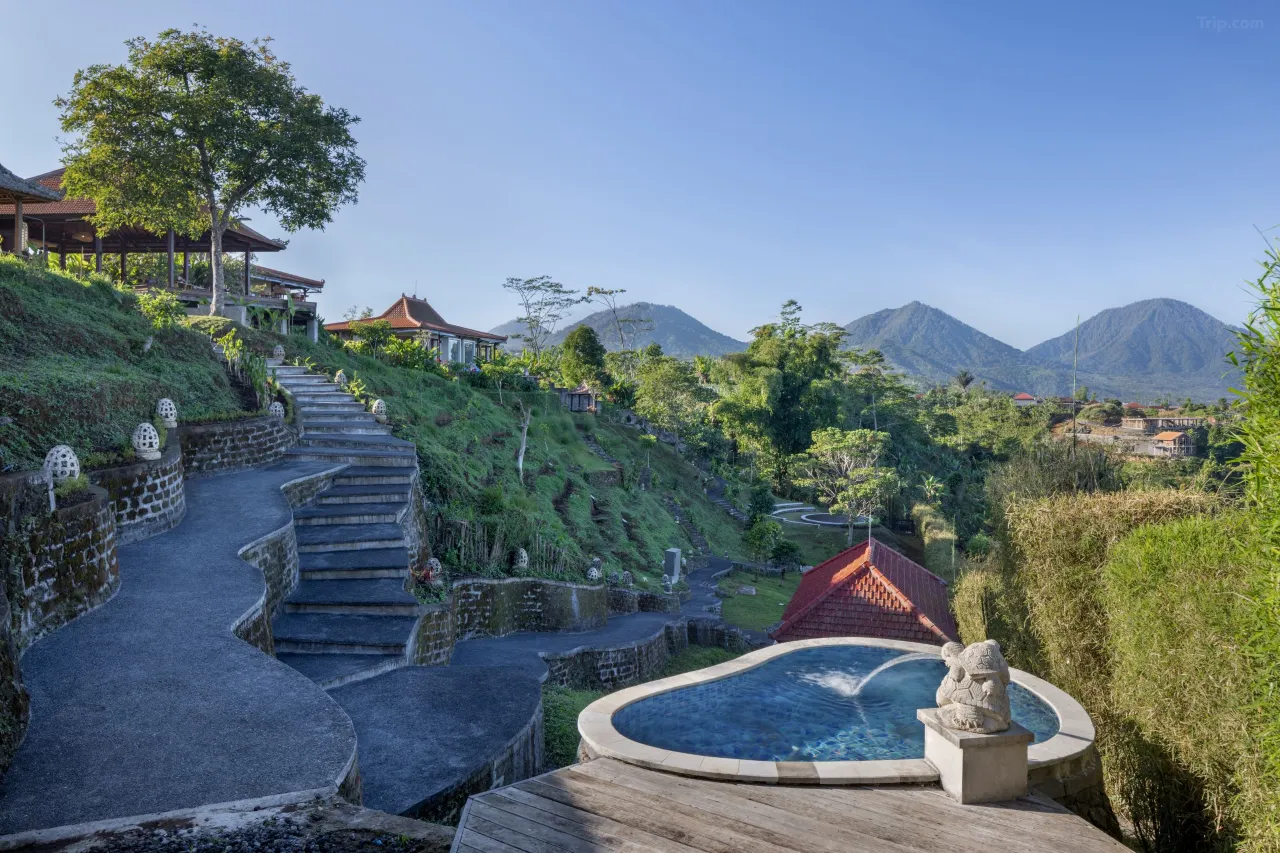
🐬 Sunrise Dolphin Watching in Lovina
📝 Describing the Experience
The sky was still deep blue when I stepped barefoot into a narrow wooden boat at Lovina Beach. As we drifted out to sea, the horizon slowly glowed with hints of orange and pink. Then, like clockwork, the dolphins arrived sleek silhouettes leaping through the waves in playful arcs. The captain smiled knowingly as everyone gasped and scrambled for their cameras. The sea was calm, the breeze gentle, and the moment surreal. Watching the sunrise while dolphins danced around us was the kind of quiet magic I’ll never forget.
📖 About Lovina Dolphin Tours
Lovina is famous for its early morning dolphin tours, where you can see pods of wild dolphins swimming just off the north coast.
📅 Best time to visit: May to September (calm seas, dry weather)
📍 How to get there: Stay in Lovina; boat tours depart from the beach before sunrise
💰 Cost: Around IDR 100,000–150,000 per person
💡 Pro Tips
- Book a tour with a smaller boat for a more personal experience.
- Bring a windbreaker early mornings on the water can be chilly.
- Don’t expect dolphins to perform, just enjoy the natural encounter.
👨👩👧👦 Is It Family-Friendly?
Yes, suitable for all ages but be sure kids are comfortable with early starts and boat rides.
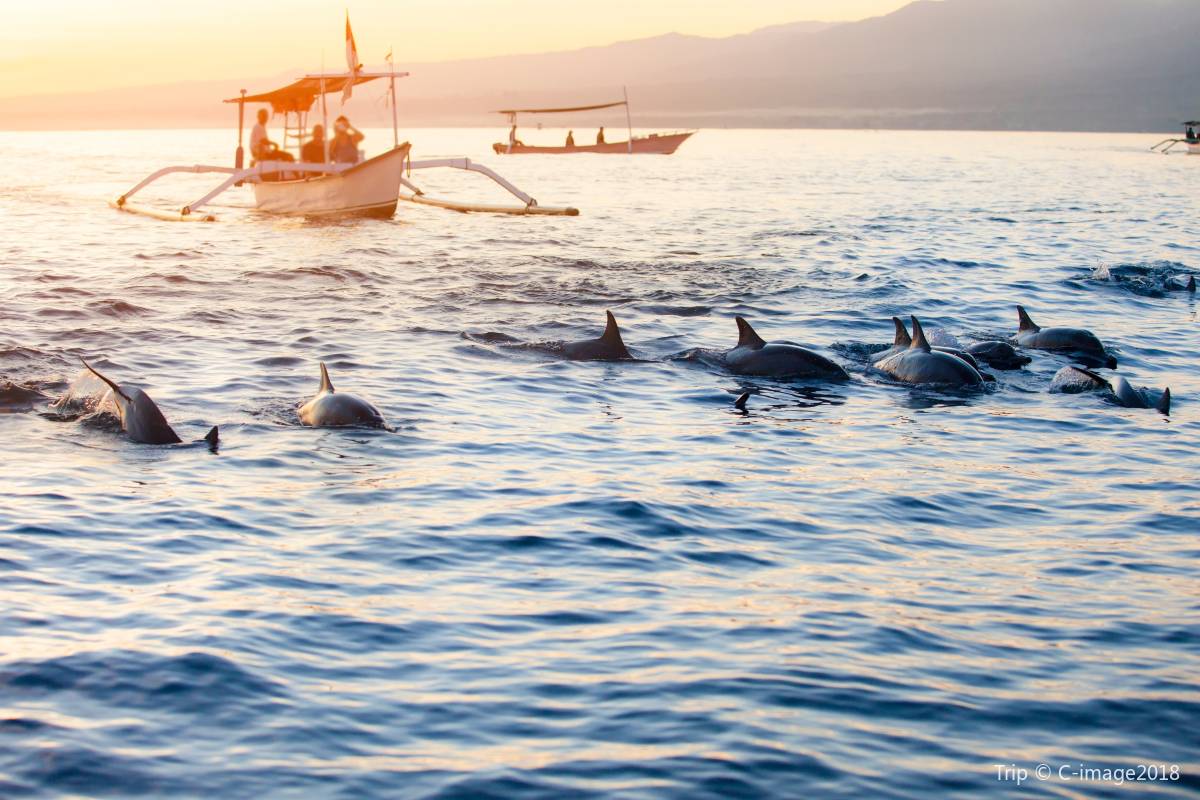
🥥Recommended Activity In North Bali
🌋 Soak in the Banjar Hot Springs
📝 Describing the Experience
Steam curled around me as I slipped into the warm, sulfur-rich waters of Banjar Hot Springs. The air smelled faintly of minerals and frangipani, and the sound of cascading water echoed off the stone walls. Surrounded by lush jungle and aged stone carvings, the entire space felt like a secret sanctuary. I let the water soothe my tired muscles, the gentle heat seeping deep into my bones. It was peaceful, almost meditative. Locals chatted quietly, tourists leaned back with eyes closed, and I just floated in the moment, feeling the world slow down around me.
📖 What Makes This Activity Special?
These centuries-old natural hot springs offer a peaceful, rejuvenating experience and are believed to have healing properties, a beloved retreat for locals and a hidden gem for travelers.
📅 Best time to do this: Morning or late afternoon, year-round
📍 Where to Start / How to Book: Located in Banjar Village, near Lovina. No booking required, just show up.
💰 Cost: IDR 20,000 for entrance; towel rental available on site
💡 Pro Tips
- Visit early to avoid crowds.
- Bring your own towel and a change of clothes.
- Keep an eye on personal belongings lockers are limited.
👨👩👧👦 Is It Family-Friendly?
Yes, great for kids and elderly visitors. Pools vary in depth and temperature.
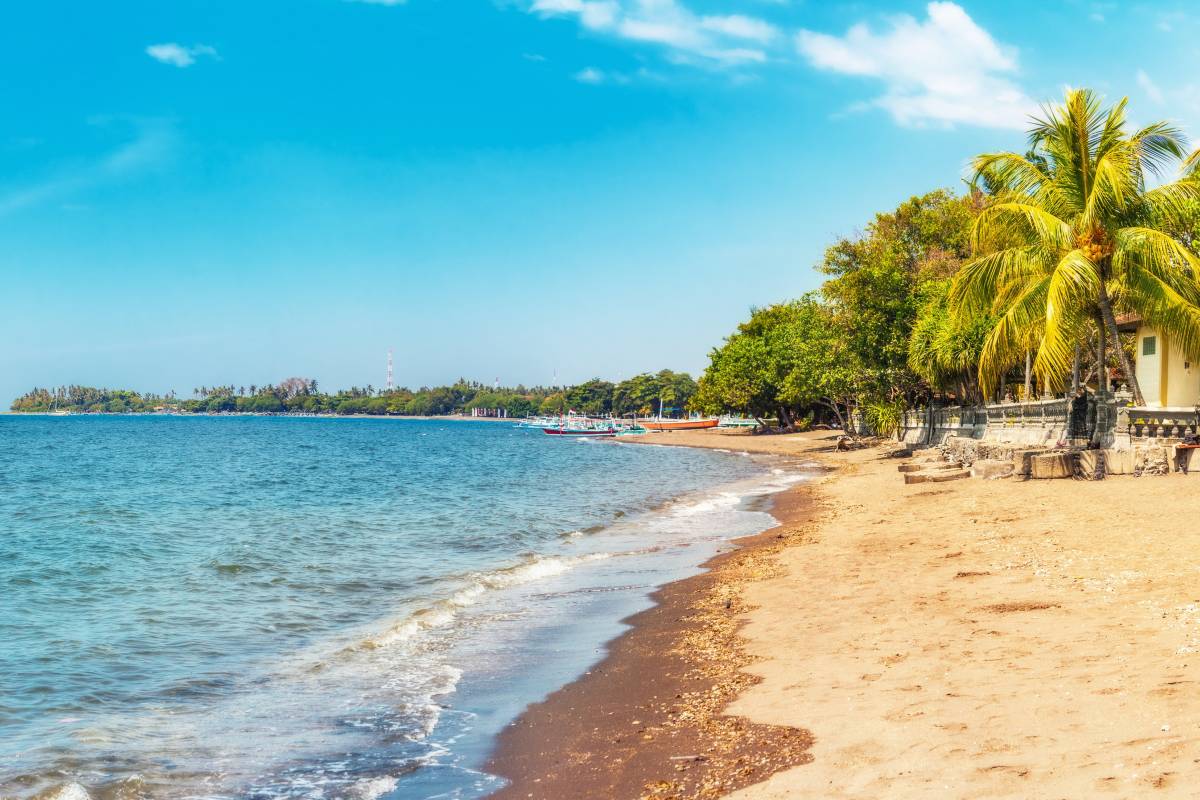
🛕 Discover Serenity at Ulun Danu Beratan Temple
📝 Describing the Experience
Mist danced over the surface of Lake Beratan as I stood in awe of the temple seemingly floating on the water. The crisp mountain air carried the scent of incense and fresh lake breeze, and the surrounding gardens were bursting with color. A soft bell rang from a nearby shrine, adding to the sense of peace that settled over the entire area. I wandered slowly, taking photos and pausing often just to breathe in the silence and sacredness of the space. It was serene, spiritual, and absolutely breathtaking, one of the most peaceful places I’ve ever been.
📖 What Makes This Activity Special?
Ulun Danu Beratan Temple is one of Bali’s most iconic landmarks — a picturesque water temple dedicated to the lake goddess Dewi Danu, set against the stunning backdrop of Bedugul’s highlands.
📅 Best time to do this: Morning, especially between May and September
📍 Where to Start / How to Book: Located in Bedugul; tickets available on site. No need to pre-book.
💰 Cost: IDR 75,000 per person
💡 Pro Tips
- Go early to avoid tour buses and catch the best light.
- Bring a light jacket, it gets chilly in the mountains.
- Explore the botanical gardens nearby for a full-day experience.
👨👩👧👦 Is It Family-Friendly?
Yes, the site is accessible and perfect for all ages. Paths are well maintained and flat.
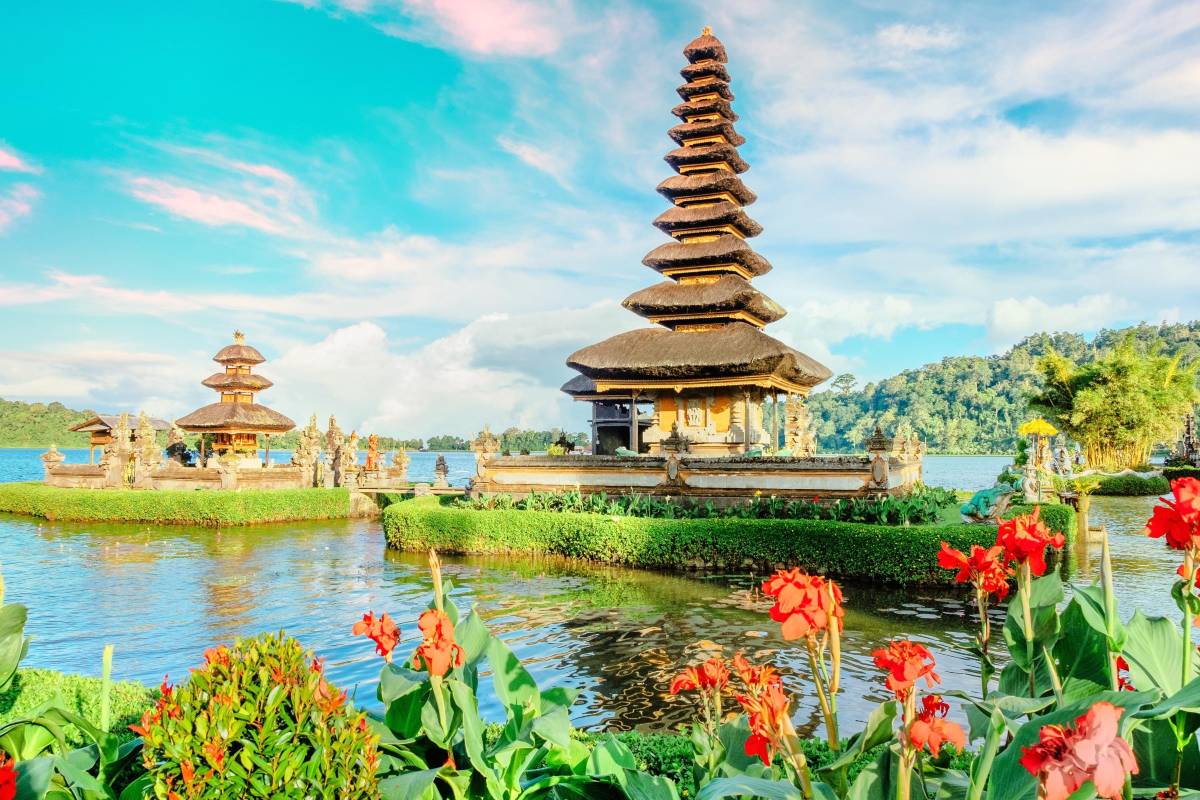
🛶 Explore Tamblingan Lake by Traditional Canoe
📝 Describing the Experience
The silence was surreal as our traditional wooden canoe glided across the glassy surface of Tamblingan Lake. Mist hovered just above the water, and the dense rainforest lining the shore felt untouched, wild and ancient. I dipped my hand into the cold, clear lake, listening to the creak of the boat and the occasional birdsong from the trees. Our guide told stories of the lake’s sacred significance while we paddled gently past floating temples and hidden shrines. It was a soul-stirring kind of quiet, one that made me feel completely present and connected to nature.
📖 What Makes This Activity Special?
This tranquil lake near Munduk is perfect for eco-friendly exploration by dugout canoe — an off-the-beaten-path experience steeped in natural beauty and Balinese spiritual tradition.
📅 Best time to do this: Early morning, from May to October
📍 Where to Start / How to Book: Tours can be arranged via guesthouses in Munduk or directly at the lake with local guides.
💰 Cost: Around IDR 150,000–200,000 per person (guided tour + canoe rental)
💡 Pro Tips
- Wear layers mornings are cool in the highlands.
- Bring a waterproof bag for your phone or camera.
- Combine with a rainforest trek for a full eco-adventure.
👨👩👧👦 Is It Family-Friendly?
Yes, though better suited for older kids due to canoe balance and outdoor conditions.
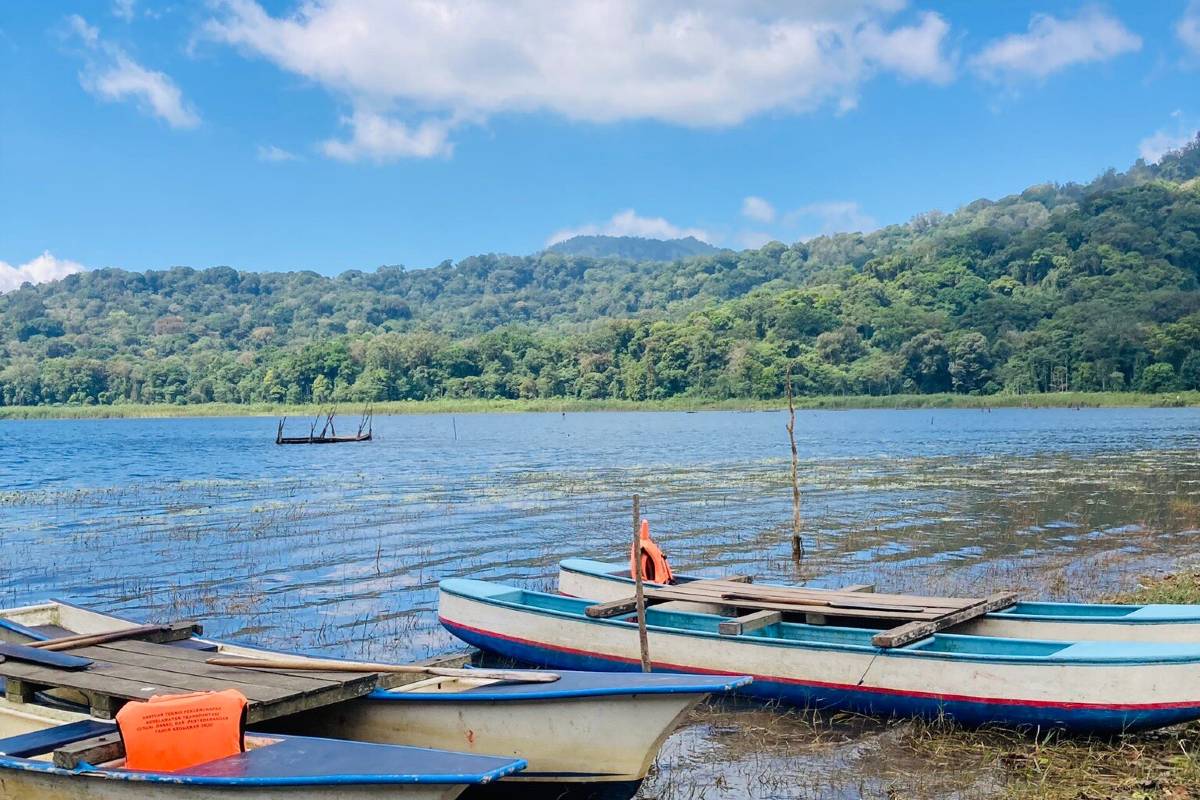
🥥Recommended FOODactivity In North Bali
🍛 Dig Into Bebek Betutu at a Traditional Warung
📝 Describing the Experience
As the waiter placed the clay pot on the table, an aromatic wave of spices turmeric, lemongrass, and shallots hit me instantly. The duck, slow-cooked to perfection, was so tender it practically fell apart with the touch of my fork. I took a bite and was met with an explosion of earthy, smoky flavor, wrapped in the warmth of Balinese spice paste. The atmosphere was calm, tucked away in a quiet warung overlooking rice paddies, with roosters crowing in the distance and incense curling from a family shrine nearby. It felt like I was tasting the heart of North Bali.
📖 What Makes This Dish Special?
Bebek Betutu is a ceremonial dish of Balinese origin, where duck is marinated in a rich blend of local spices, wrapped in banana leaves, and slow-cooked for hours often served during temple festivals and family feasts.
📅 Best time to eat this: Evening, when the duck is freshly slow-roasted
📍 Where to find it: Warung Makan Nikmat or local eateries in Singaraja and Lovina
💰 Cost: IDR 75,000–100,000; casual dining setting
💡 Pro Tips
- Call ahead, it takes hours to prepare and may need pre-ordering.
- Eat it with your hands for a truly local experience.
- Pair it with sambal matah for a spicy kick.
👨👩👧👦 Is It Family-Friendly?
Yes, though the strong spices may be intense for young kids.
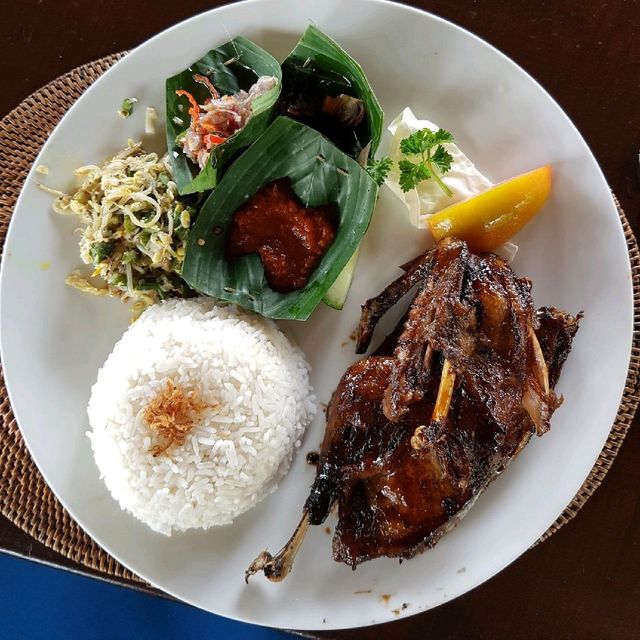
🥥 Try Jaje Laklak from a Village Market Stall
📝 Describing the Experience
At a bustling roadside eatery in Singaraja, I was served a sizzling plate of mujair nyat-nyat. The crispy fried tilapia was smothered in a vibrant yellow sauce, its aroma a tantalizing mix of lemongrass and turmeric. The first bite was a revelation, crunchy skin giving way to succulent flesh, the sauce adding a spicy, tangy kick. The lively chatter of locals and the clatter of utensils created an authentic, energetic atmosphere.
📖 What Makes This Dish Special?
Mujair nyat-nyat is a North Balinese specialty, showcasing the region's love for bold flavors. The fish is fried to perfection and topped with a spicy, aromatic sauce made from traditional spices and coconut milk, reflecting the area's culinary heritage.
📅 Best time to eat this: Lunch, when the fish is freshest and the eatery is lively.
📍 Where to find it: RM Pak Bagong, Singaraja, North Bali.
💰 Cost: Around Rp 50,000 - Rp 70,000. It's a casual, local dining spot. The dish is not vegetarian-friendly but is typically halal.
💡 Pro Tips:
- Be prepared for a spicy kick; request a milder version if needed.
- Pair it with a cold coconut drink to balance the heat.
- Visit during weekdays to avoid the weekend rush.
👨👩👧👦 Is It Family-Friendly?
Yes, but note the spiciness level. Suitable for families with older children and adults who enjoy bold flavors.

🐟 Feast on Fresh Grilled Fish on Lovina Beach
📝 Describing the Experience
As the sun dipped low over Lovina Beach, I sat barefoot in the sand, watching my dinner sizzle on a coconut husk fire. The scent of grilled garlic, lime, and smoke drifted over the shore as the waves gently lapped nearby. My plate arrived: a whole snapper, perfectly charred, its skin crisp and meat juicy. I squeezed fresh lime over it and dipped each bite into a tangy sambal. Each mouthful was briny, smoky, and spicy all at once — a taste of the sea and the flame. Lanterns flickered nearby, and the laid-back, beachy vibe made it even better.
📖 What Makes This Dish Special?
Lovina is known for its daily fresh catch, grilled over open flames right on the beach. It’s a simple yet unforgettable way to enjoy North Bali’s seafood culture.
📅 Best time to eat this: Sunset, when beach grills are fired up
📍 Where to find it: Lovina beachfront stalls or restaurants like Warung Dolphin
💰 Cost: Rp 60,000 - Rp 120,000 depending on fish size; casual beachfront setting
💡 Pro Tips
- Choose your fish from the display it’s usually caught the same morning.
- Ask for sambal matah for a fresh, spicy kick.
- Bring cash; smaller vendors may not accept cards.
👨👩👧👦 Is It Family-Friendly?
Yes, with grilled fish options that suit all ages. Beachside dining is relaxed and kid-friendly.

🥥Recommended Nightlife In North Bali
🍹 Chill Out by the Sea at Spice Beach Club
📝 Describing the Experience
As the sky melted into shades of orange and pink, I sank into a beachside lounge at Spice Beach Club with a mojito in hand and the salty breeze brushing against my skin. A live acoustic band played gentle tunes that mixed perfectly with the sound of the waves. Candlelit tables glowed under swaying palm trees, and the smell of grilled seafood drifted from the open kitchen. The vibe was effortless, classy but laid-back perfect for unwinding after a day exploring the northern coast.
📖 What Makes This Spot Special?
Spice Beach Club in Lovina is the go-to beachfront venue for cocktails, seafood, and sunset views. Its stylish design, relaxed atmosphere, and frequent live music events make it a standout in North Bali’s quiet nightlife scene.
📅 Best time to go: Around 5 PM for sunset and happy hour
📍 Where to find it: Spice Beach Club, Lovina Beach, Buleleng
💰 Cost: IDR 50,000–150,000 per drink; no cover charge; smart casual attire recommended
💡 Pro Tips
- Arrive early to grab a front-row seat for sunset.
- Try their signature Balinese Passion cocktail.
- Bring a light jacket. The sea breeze gets cool after dark.
👨👩👧👦 Is It Family-Friendly?
Yes, kids are welcome, and there’s a casual dining menu for families earlier in the evening.
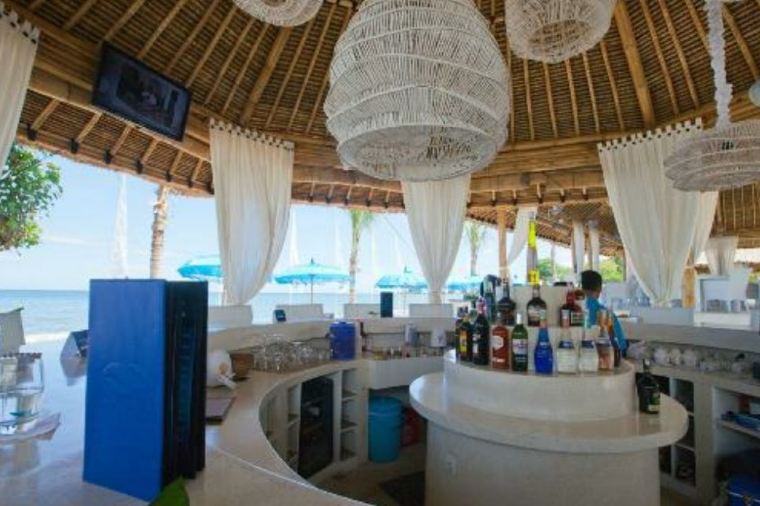
🎶 Dance Under the Stars at AKAR Bar Munduk
📝 Describing the Experience
I found AKAR Bar hidden in the forested hills of Munduk, its warm lights peeking through the misty night like a secret beacon. Inside, it was buzzing locals and travelers chatting over craft cocktails, the DJ spinning a deep house that blended with the sounds of the jungle outside. The wooden deck opened up to the stars, where we danced barefoot under fairy lights strung between the trees. Everything about it felt magical, raw and real, yet stylish and full of soul.
📖 What Makes This Spot Special?
AKAR is North Bali’s hidden nightlife gem a jungle bar with a curated music lineup, eco-conscious design, and community vibe. It’s where you’ll find intimate parties in the hills, far from the beach crowds.
📅 Best time to go: Friday and Saturday nights for DJs and live sets
📍 Where to find it: AKAR Bar, Munduk village hillside
💰 Cost: IDR 75,000–200,000; no entry fee; casual chic dress recommended
💡 Pro Tips
- Bring cash the signal can be spotty for card machines.
- Follow them on Instagram for updates on special events.
- Come early for sunset drinks and stay late to dance.
👨👩👧👦 Is It Family-Friendly?
No, it’s adults-only and better suited for nightlife lovers and backpackers.
🍻 Join a Beach Bonfire Party in Lovina
📝 Describing the Experience
I sat in a circle around a crackling bonfire on Lovina Beach, a cold Bintang in one hand and a stick of satay in the other. The sound of waves mixed with live acoustic guitar as a local band played familiar tunes with a tropical twist. Someone passed around roasted peanuts, and laughter bounced between strangers-turned-friends. Lanterns floated above us into the night sky. It was simple, soulful, and unforgettable.
📖 What Makes This Spot Special?
Unlike Bali’s rowdy southern beach parties, Lovina offers a more intimate scene with beach bonfires hosted by local bars. They often feature live music, grilled food, and great conversations under the stars.
📅 Best time to go: Weekends after 7 PM
📍 Where to find it: Lovina Beachfront near Sea Breeze Café or local warungs
💰 Cost: Free entry; beers IDR 30,000–50,000; casual beachwear is perfect
💡 Pro Tips
- Bring a sarong or towel to sit on the sand comfortably.
- Ask locals where the bonfire will be. It changes nightly.
- Great for solo travelers looking to meet others.
👨👩👧👦 Is It Family-Friendly?
Yes, especially early in the evening kids can enjoy the fire, music, and beach before it gets too lively.

🥥Recommended Shopping Place In North Bali
🧺 Browse Local Handicrafts at Sukasada Market
📝 Describing the Experience
The scent of incense and fresh tropical fruit greeted me as I stepped into Sukasada Market, a bustling maze of woven baskets, colorful sarongs, and wooden carvings. Local women in kebaya chatted over fresh produce while artisans displayed handmade trinkets, masks, and silver jewelry. I ran my hands over soft ikat textiles, admired batik wall hangings, and even sampled sweet palm sugar straight from a vendor’s stall. It was lively, authentic, and deeply rooted in North Bali’s everyday life.
📖 What Makes This Shopping Spot Special?
Sukasada Market is one of the best places to shop in North Bali for handmade souvenirs, traditional crafts, and local snacks. It’s an unfiltered slice of Balinese culture where locals shop daily, making it more genuine than touristy markets.
📅 Best time to shop: Early morning before 10 AM for fresh finds and cooler temps
📍 Where to find it: Sukasada Market, near Singaraja, North Bali
💰 Price range: IDR 10,000–150,000; always bargain respectfully for better deals
💡 Pro Tips
- Bring small bills for easier bargaining.
- Don’t miss the spice stalls; they're perfect for edible souvenirs.
- Wear comfy shoes; the narrow lanes can get crowded.
👨👩👧👦 Is It Family-Friendly?
Yes, but keep an eye on kids in the busy sections. There are nearby warungs and shaded areas to rest.
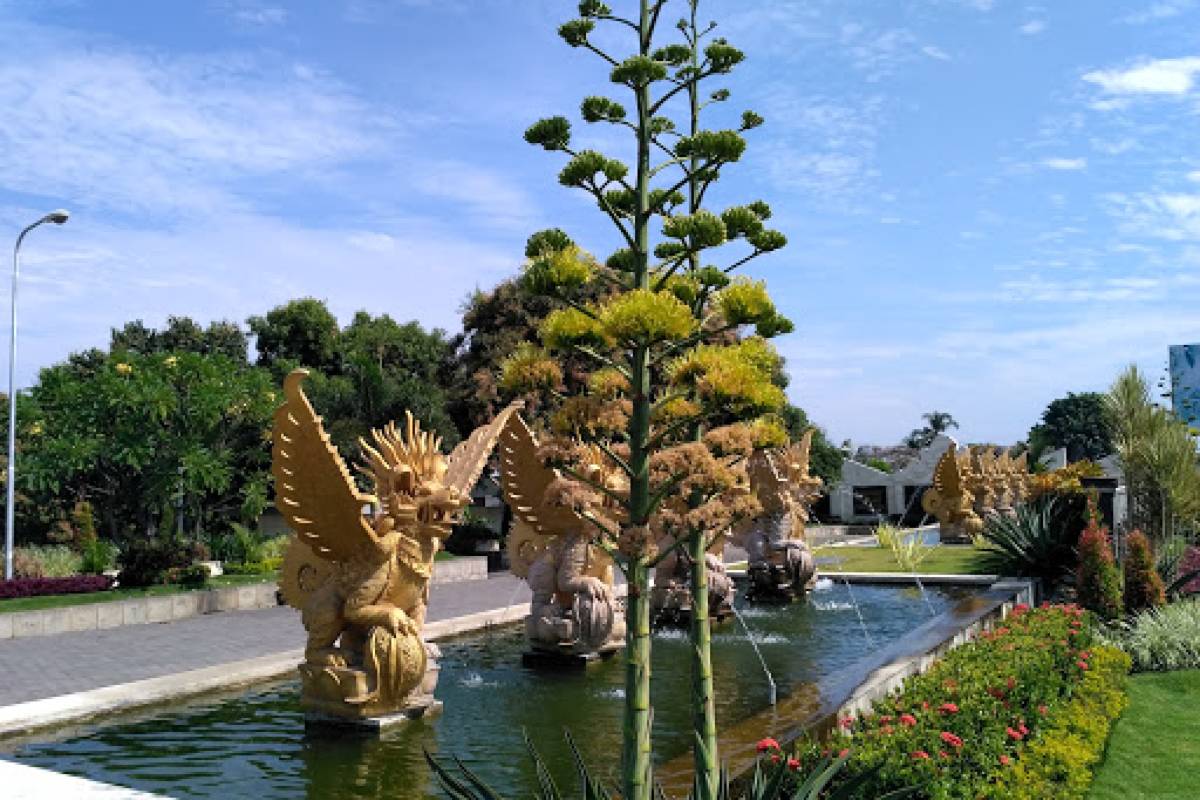
🎨 Discover Artisan Treasures at Lovina Art Market
📝 Describing the Experience
I wandered into the Lovina Art Market after a lazy beachfront lunch, drawn in by stalls of vibrant paintings fluttering in the breeze. The scent of coconut oil and incense lingered as I admired hand-painted canvases, carved teakwood masks, and delicate beadwork. Artists stood nearby, quietly working or ready to explain the story behind their crafts. It was peaceful, with soft gamelan music playing from a nearby café, making the whole experience feel like a slow, creative journey.
📖 What Makes This Shopping Spot Special?
Lovina Art Market is one of the most charming places to shop in North Bali, offering authentic Balinese crafts straight from the artists. You can often meet the creators and find one-of-a-kind items, from sculpture to textiles.
📅 Best time to shop: Late afternoon for cooler weather and fewer crowds
📍 Where to find it: Along Jalan Binaria, Lovina Beachfront, North Bali
💰 Price range: IDR 50,000–500,000; prices are negotiable, especially if buying multiple items
💡 Pro Tips
- Chat with the artists they sometimes offer custom pieces.
- Combine your visit with sunset cocktails nearby.
- Bring cash, as few vendors accept cards.
👨👩👧👦 Is It Family-Friendly?
Yes, very relaxed and suitable for all ages, with space to stroll and beach cafés for breaks.
👜 Shop Unique Finds at Ume Anyar Village Boutiques
📝 Describing the Experience
Tucked among rice fields and coconut trees, the boutique shops of Ume Anyar felt like a secret. I explored small studio spaces where local designers sold batik kimonos, eco-dyed scarves, and handmade jewelry crafted from volcanic stone. The air was filled with the smell of lemongrass and essential oils, and soft music played in the background. Everything felt curated and mindful, perfect for finding gifts that tell a story.
📖 What Makes This Shopping Spot Special?
This off-the-beaten-path shopping destination is ideal for finding sustainable fashion and ethical crafts in North Bali. It’s popular among slow travelers and those seeking handmade luxury with a conscience.
📅 Best time to shop: Late morning to early afternoon (some shops close by 4 PM)
📍 Where to find it: Ume Anyar, along the coastal road west of Seririt
💰 Price range: IDR 100,000–1,000,000; fixed pricing at some eco-boutiques
💡 Pro Tips
- Ask about the story behind the materials many are upcycled or naturally dyed.
- Some shops offer private shopping appointments ahead if you can.
- Bring a reusable tote bag for your new treasures.
👨👩👧👦 Is It Family-Friendly?
Yes, it’s peaceful and quiet with garden cafés nearby for relaxing while others shop.
Hotels Recommendation In North Bali
🥥Recommended Festival In North Bali
🌾 Witness the Magic of Galungan Festival in North Bali
📝 Describing the Experience
As I wandered through a quiet North Balinese village during Galungan, I was surrounded by towering penjor—bamboo poles arching over the streets, adorned with coconut leaves and offerings. The air was filled with the scent of incense and frangipani, and I could hear gamelan music echoing from family compounds. Locals dressed in pristine white ceremonial attire moved gracefully to and from temples, carrying baskets of offerings. I was welcomed into a family celebration, tasting homemade lawar and sweet rice cakes under a decorated pavilion—it felt spiritual, festive, and deeply connected to the island’s soul.
📖 What Makes This Festival Special?
Galungan celebrates the victory of dharma (good) over adharma (evil), marking the time when ancestral spirits return to visit their families. It's one of the most sacred and significant festivals in Bali. Every home and temple becomes a sanctuary of color, prayer, and food.
📅 When & where: Every 210 days, based on the Balinese Pawukon calendar; celebrated across all of Bali
📍 Best places to experience it: Traditional villages like Munduk, Sawan, and Banjar
💰 Cost: Free; some temple ceremonies may require sarong rental or donation
💡 Pro Tips
- Wear a sarong and sash when visiting temples.
- Stay in a homestay to join local family rituals.
- Avoid driving on the main roads during ceremonies.
👨👩👧👦 Is It Family-Friendly?
Yes, but small children may find temple rituals long; family-friendly homestays help make it more comfortable.
🔥 Celebrate Bali's Day of Silence — Nyepi
📝 Describing the Experience
Experiencing Nyepi in North Bali was unlike anything I’ve ever known a full 24 hours of silence, darkness, and total stillness. The night before, I joined the locals in Singaraja for the Ogoh-Ogoh parade. Giant demonic statues paraded through the streets, accompanied by booming drums and torchlight. Then, just like magic, the next day came, and everything stopped. No cars, no lights, no talking. Even the airport closed. I sat on my villa balcony, listening only to the wind and waves. It was eerie, peaceful, and oddly grounding.
📖 What Makes This Festival Special?
Nyepi is the Balinese New Year based on the Saka calendar and is observed with a day of silence to cleanse the island and the soul. It’s a time for reflection, meditation, and spiritual rebirth. Locals fast, pray, and avoid all worldly distractions.
📅 When & where: March (date varies by lunar calendar); observed across Bali
📍 Best places to experience it: Singaraja, Lovina, or any quiet village accommodation
💰 Cost: Free, but staying in hotels or villas incurs normal accommodation charges
💡 Pro Tips
- Stock up on food and essentials the day before.
- Respect the silence; no lights or outdoor activity allowed.
- Book a scenic stay to enjoy the quiet beauty.
👨👩👧👦 Is It Family-Friendly?
Yes, if children can manage a quiet day indoors. Some hotels offer activities to help families observe respectfully.
🌺 Join the Lovina Beach Festival
📝 Describing the Experience
Lovina came alive with energy during the Lovina Beach Festival colorful tents lining the coast, traditional dance performances on the sand, and the scent of sate lilit sizzling on open grills. I watched a kecak performance as the sun dipped below the ocean, rhythmic chanting filling the air. By nightfall, fireworks lit the sky and live bands played everything from reggae to gamelan fusion. I joined locals and tourists alike dancing barefoot under string lights, coconut in hand.
📖 What Makes This Festival Special?
This annual celebration highlights North Bali’s art, culture, and coastal beauty. It features parades, local food stalls, cultural performances, and even traditional boat races. Unlike bigger festivals in the south, this one feels personal and deeply rooted in community pride.
📅 When & where: Usually held in September; Lovina Beach, North Bali
📍 Best places to experience it: Main beachfront at Kalibukbuk, Lovina
💰 Cost: Free for public events; some VIP concerts or activities may charge IDR 50,000–100,000
💡 Pro Tips
- Arrive early to grab front-row beach spots for performances.
- Try the local food stalls, they're authentic and delicious.
- Book accommodations in advance; it gets busy.
👨👩👧👦 Is It Family-Friendly?
Absolutely! Kids will love the dance shows and food, and there are plenty of open spaces for families to relax.
🥥Recommended Unique Experience In North Bali
🌿 Trek to the Secret Waterfall of Lemukih
📝 Describing the Experience
I followed a narrow jungle path in Lemukih, with nothing but the sounds of chirping birds and the soft gurgle of nearby streams. As I descended through terraced rice fields and crossed a bamboo bridge, the air became cooler and damper. Suddenly, I heard a roar there, the hidden Sekumpul Waterfall. But I didn’t stop there. I continued along a lesser-known trail that led me to a second, secret cascade nestled deep in the forest. The waterfall was smaller but completely secluded. I was the only soul there, letting the mist cool my face in absolute silence.
📖 What Makes This Experience Unique?
Unlike the main Sekumpul route, this hidden trail through Lemukih Village offers untouched nature and a quieter alternative. It’s a local secret known only to guides from the village, offering a deeper connection to Bali’s raw beauty.
📅 Best time to do this: Early morning during the dry season (May–October)
📍 Where to start: Lemukih Village, about 30 minutes from Singaraja
💰 Cost: IDR 150,000–250,000 with local guide
💡 Pro Tips
- Wear sturdy shoes, descent can be slippery.
- Bring swimwear for a dip beneath the falls.
- Hire a Lemukih guide, they know secret routes and safe paths.
👨👩👧👦 Is It Family-Friendly?
Not ideal for young kids or elderly travelers due to steep trails. Teens and active adults will love it.
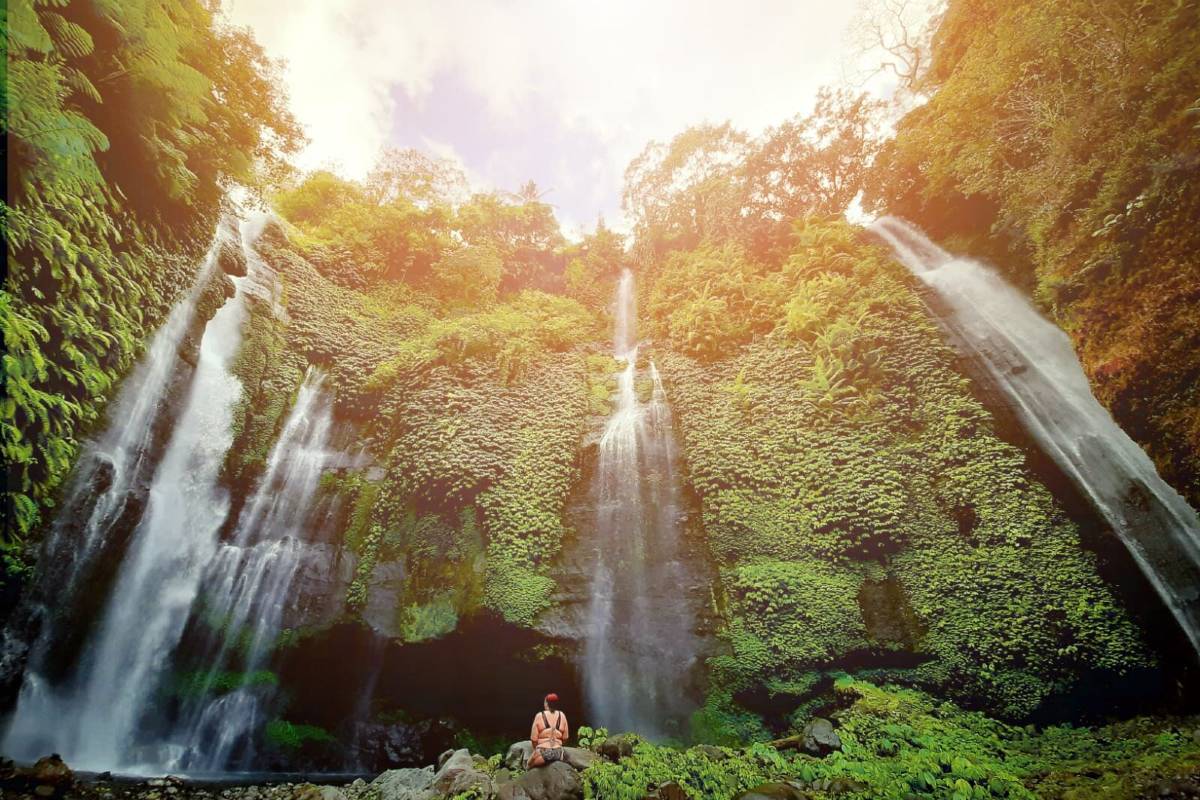
🌅 Meditate at Pura Beji’s Sacred Springs
📝 Describing the Experience
Tucked away in Sangsit Village, I found Pura Beji, a tranquil temple surrounded by frangipani trees and sculpted stone guardians. But the true magic lay behind the temple, where a small path led me to a centuries-old sacred spring. I sat on the mossy edge, feet in the cool water, and joined a local priest in a short meditation. The atmosphere was otherworldly serene, spiritual, and deeply personal. I could hear the rustling of leaves and the soft chanting from within the temple.
📖 What Makes This Experience Unique?
While tourists flock to bigger temples, Pura Beji offers an intimate glimpse into Bali’s spiritual traditions. Known for its irrigation goddess and unique carvings, it’s a vital part of North Bali’s Subak culture. Few tourists venture to the spring, making it a peaceful off-the-beaten-path activity.
📅 Best time to do this: Morning or before sunset on a weekday
📍 Where to start: Pura Beji, Sangsit Village (15 mins from Singaraja)
💰 Cost: Donation-based (IDR 10,000–20,000 suggested)
💡 Pro Tips
- Bring a sarong for temple entry.
- Ask the temple keeper politely for access to the spring.
- Avoid loud conversations, locals often come here to pray.
👨👩👧👦 Is It Family-Friendly?
Yes, suitable for respectful children and seniors; flat paths and peaceful surroundings.
🧗 Climb the Lava Field of Mount Lesung
📝 Describing the Experience
Climbing Mount Lesung wasn’t just a hike, it felt like walking through a forgotten world. The trail wound through misty jungle, echoing with the calls of birds and the crunch of lava rocks underfoot. I reached a blackened ridge that revealed panoramic views of Lake Tamblingan, shrouded in clouds. Unlike the tourist-heavy treks at Mount Batur, I didn’t pass a single soul on the trail. Just me, the wind, and an endless horizon of green and grey.
📖 What Makes This Experience Unique?
Mount Lesung is one of North Bali’s least-visited volcanoes. The lava field is a remnant of a powerful eruption and remains mostly untouched. The area is sacred to locals and offers raw, meditative beauty that few travelers discover.
📅 Best time to do this: Sunrise hike during the dry season (May–October)
📍 Where to start: Desa Munduk or Tamblingan area (local guides available)
💰 Cost: IDR 200,000–350,000 with guide
💡 Pro Tips
- Bring a flashlight for pre-dawn climbs.
- Carry plenty of water. No stalls along the way.
- Respect local customs; this mountain is considered sacred.
👨👩👧👦 Is It Family-Friendly?
Not suitable for small kids or elderly. Fit teens and adventurous adults will love the challenge.
Flight To Bali
- Satu Arah
- Pulang-Pergi
- direct cheapest
 CGK18:001h 50mLangsungDPS20:50Jakarta - Bali|Sel, 6 Jan|Airasia IndonesiaVND 1.122.419VND 1.338.15816% off16% offVND 1.338.158VND 1.122.419
CGK18:001h 50mLangsungDPS20:50Jakarta - Bali|Sel, 6 Jan|Airasia IndonesiaVND 1.122.419VND 1.338.15816% off16% offVND 1.338.158VND 1.122.419  CGK19:301h 50mLangsungDPS22:20Jakarta - Bali|Rab, 7 Jan|TransNusaVND 1.133.680VND 1.338.15815% off15% offVND 1.338.158VND 1.133.680
CGK19:301h 50mLangsungDPS22:20Jakarta - Bali|Rab, 7 Jan|TransNusaVND 1.133.680VND 1.338.15815% off15% offVND 1.338.158VND 1.133.680 CGK19:301h 50mLangsungDPS22:20Jakarta - Bali|Sel, 6 Jan|TransNusaVND 1.137.434VND 1.338.15815% off15% offVND 1.338.158VND 1.137.434
CGK19:301h 50mLangsungDPS22:20Jakarta - Bali|Sel, 6 Jan|TransNusaVND 1.137.434VND 1.338.15815% off15% offVND 1.338.158VND 1.137.434 JKT1:00 PM3h 5mLangsungDPS2:00 PMJakarta - Bali|Fri, Jan 2|Airasia IndonesiaTemukan Penerbangan LainnyaTemukan Penerbangan Lainnya
JKT1:00 PM3h 5mLangsungDPS2:00 PMJakarta - Bali|Fri, Jan 2|Airasia IndonesiaTemukan Penerbangan LainnyaTemukan Penerbangan Lainnya
Harga penerbangan yang ditampilkan dari ${{departCityName}} ke ${{arrivalCityName}} didasarkan pada rata-rata harga berbagai maskapai untuk 3 bulan ke depan, menurut basis data terbaru Trip.com.
🥥Let’s Go To North Bali
North Bali has a quiet kind of magic, the kind that lingers long after you've left. It’s not flashy or fast-paced, but that’s exactly why it stays with you. Whether I was wandering through serene temples, chasing waterfalls in the jungle, or sipping kopi Bali in a sleepy village, I felt like I’d uncovered a side of the island that most people miss. Sure, getting around can be tricky with fewer tourist buses and longer drives, but the peaceful vibe and warm local welcome more than make up for it. The charm here lies in the unexpected hidden hot springs, village ceremonies, wild dolphins at sunrise. If you're browsing Flights to North Bali, this is your sign to go off the beaten path. And don’t stress about where to stay. There are some lovely, tranquil Hotels in North Bali tucked right into nature. Now’s a great time to plan. There are amazing discounts on flights and hotels in North Bali right now. Hope you get to experience it soon. It's a gem that deserves to be savored.
📄 FAQs: Common Questions About Visiting North Bali
1️⃣ What’s the best way to get around North Bali?
Getting around North Bali is easiest if you rent a scooter or hire a private driver—public transport is limited and not very convenient. I usually go with a local driver who knows the backroads (and secret viewpoints!). If you're confident on two wheels, a scooter gives you total freedom, especially for exploring hidden waterfalls or remote temples.2️⃣ How much should I budget per day?
You can enjoy North Bali on around $30–$50 USD per day. Street food or warung meals cost under $3, entrance fees are generally cheap, and hiring a driver for the day is around $30–$40. To save more, stay in guesthouses or locally-run homestays they’re charming and budget-friendly.3️⃣ Is North Bali safe for tourists?
Yes, North Bali feels very safe even for solo travelers. I’ve walked through villages and markets with no issues. Just be cautious when riding scooters (the roads can get narrow), and keep your valuables close in crowded spots like Lovina Beach or local night markets.4️⃣ What’s a common tourist mistake in North Bali?
Many people rush through North Bali or skip it entirely. Big mistake! It’s way more laid-back and authentic than the south. Also, don’t underestimate travel time—distances seem short, but winding mountain roads mean you’ll need more time than expected to get around.5️⃣ Do I need cash, or can I use a credit card everywhere?
Definitely carry cash. Most small shops, warungs, and local drivers don’t accept cards. ATMs are available in main towns like Lovina, but they’re not everywhere so stock up before heading to remote areas.6️⃣ Is tipping expected in North Bali?
Tipping isn’t mandatory but always appreciated. I usually leave 5–10% at restaurants and tip drivers or guides around 20,000–50,000 IDR depending on the service. It goes a long way and supports local livelihoods.
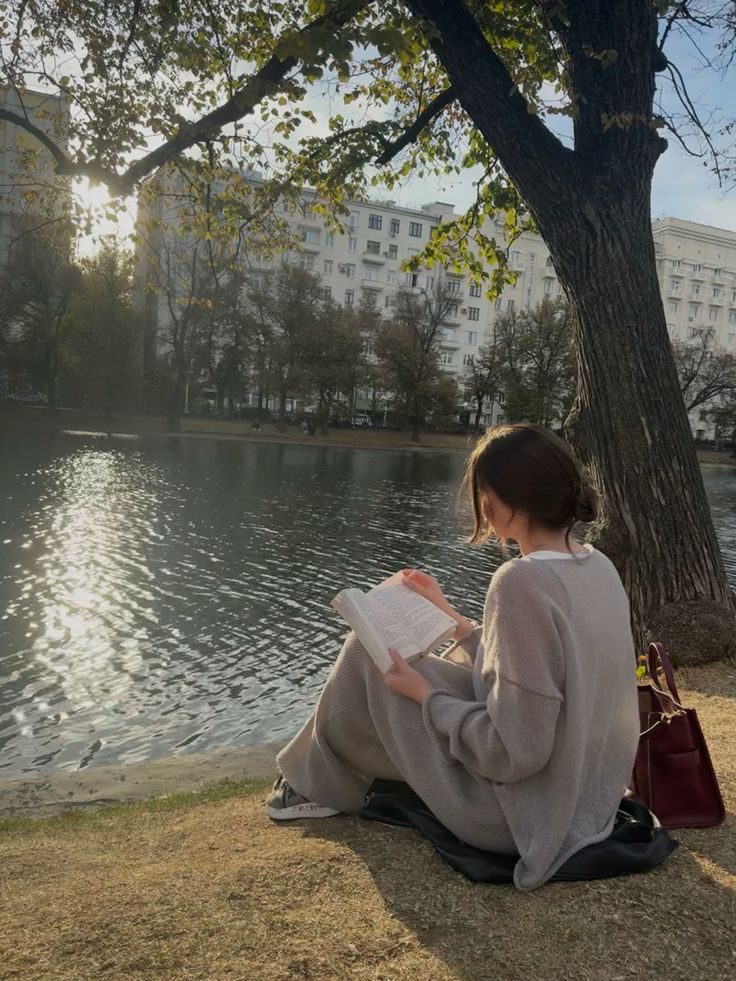
 NO.1
NO.1



